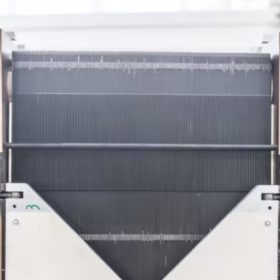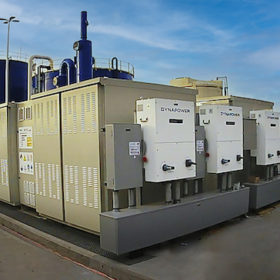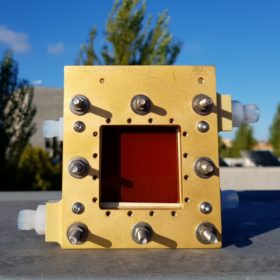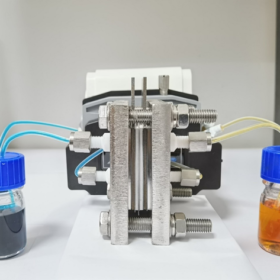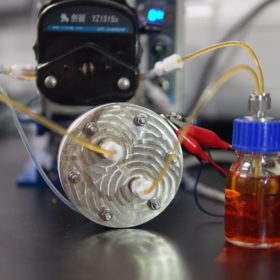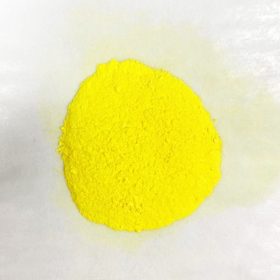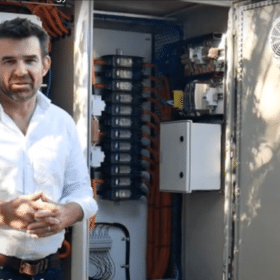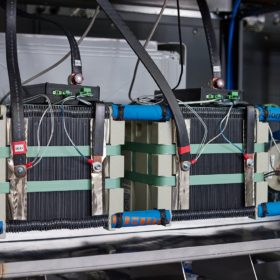UK group developing floating organic flow battery storage project
MSE international and its partners have concluded the feasibility study for an organic large-scale flow battery project in Portsmouth, England. The 650 kW/6.1 MWh project might end up having have a lower levelized cost of electricity than lithium-ion or vanadium redox flow batteries.
Australian flow battery company completes ‘milestone’ installation
Brisbane-based flow battery company Redflow has completed its single biggest installation to date, a 2 MWh storage system in California for biowaste technology firm Anaergia.
Solar redox flow cell for residential energy storage
The device was designed by scientists in Portugal to optimize light absorption by the semiconductor and ensure an effective diffusion of redox species while offering minimal electronic and ionic transport resistance. The cell has a 25cm2 photoactive area and relies on ferrocyanide/anthraquinone redox flow chemistry and a nanostructured hematite photoelectrode.
Redox flow battery with capacity retention of 99.98% per cycle
The battery was fabricated by Chinese scientists with a low-cost electrolyte made of a derivative of TEMPO, which is a well-known electroactive aminoxyl radical used with several applications in chemistry and biochemistry. According to the researchers, the battery shows high redox potential and is crossover-free.
Enel installs 6.1 MWh vanadium redox flow battery in Spain
The battery will be provided by Canadian vanadium mining company Largo Resources. It will come online in the third quarter of next year.
Sulphur-based redox flow battery with 15 consecutive hours of runtime
Researchers from Hong Kong have applied a novel charge-reinforced, ion-selective (CRIS) membrane to a polysulfide-iodide redox flow battery they had built in 2016. The redox flow battery showed a capacity decay rate of just 0.005% per day for 1,200 cycles, and a lifetime with over 2,000 hours’ cycling, which the academics said corresponds to approximately three months.
Redox flow battery based on fluorenone
The storage system is based on fluorenone derivative anolytes. Despite its small dimensions, the device is claimed to have an energy density that is more than twice that of the vanadium batteries in use today.
Best membrane for non-aqueous redox flow batteries
A Chinese-Finnish research team has identified composite membranes as the best future option for non-aqueous redox flow batteries.
Redox launches high-voltage redox flow storage solution
Australia’s Redflow has unveiled its new Energy Pod Z module.
New stack design for cheaper redox flow batteries
German scientists have proposed a new design for stacks used in redox flow batteries. Through a powder-to-roll process, a device that weighs 80% less than a conventional stack was fabricated.
